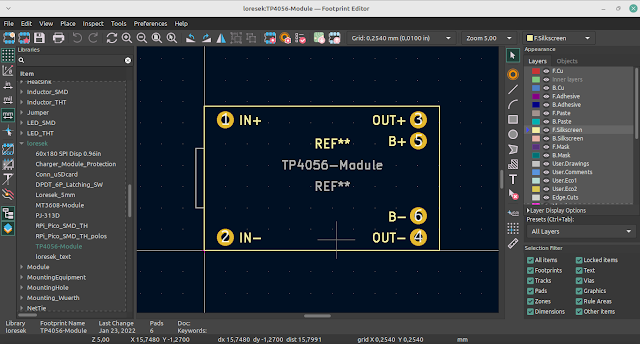Exploring the Power of PicoGlither for Voltage Glitching Attacks
In the world of cybersecurity, every device is vulnerable in some way, especially if attackers can get close enough to start experimenting with the device’s physical components. One unique tool for researchers and enthusiasts is PicoGlither, an affordable, adaptable way to explore voltage glitching attacks on hardware. In the cybersecurity field, voltage glitching is a specialized form of attack that requires careful timing and equipment—but PicoGlither brings this power within reach by leveraging the Raspberry Pi Pico’s capabilities.
Let’s explore what makes PicoGlither so useful for voltage glitching and how it could become a game-changer for hardware security.
Understanding Voltage Glitching: A Quick Overview
Voltage glitching is an attack technique where attackers momentarily manipulate a device’s power supply, hoping to influence or even bypass its security mechanisms. By causing momentary “glitches” in the voltage, attackers can force a device to skip certain instructions, such as security checks, allowing access to restricted functionality or sensitive data.
Typically, voltage glitching attacks have required high-end equipment to achieve the precision timing needed, making this a niche but powerful technique mainly available to experienced hackers and researchers. PicoGlither, however, offers an accessible and low-cost solution, allowing anyone with basic knowledge to start experimenting with voltage glitching.
What is PicoGlither?
PicoGlither is an open-source voltage glitching tool that uses a Raspberry Pi Pico as its foundation. Developed with budget-conscious tinkerers and cybersecurity researchers in mind, PicoGlither transforms this $4 microcontroller into a powerful hardware attack platform, capable of delivering precise, programmable voltage glitches.
The PicoGlither project offers a unique combination of affordability, flexibility, and ease of use:
- Affordable Entry Point: Utilizing a $4 Raspberry Pi Pico, it significantly lowers the cost of entry compared to traditional glitching tools.
- Customizable Codebase: Since it’s open-source, users can easily modify and experiment with the PicoGlither’s code to suit their needs.
- Precise Timing Control: Using the Pico’s programmable I/O (PIO) capabilities, PicoGlither achieves the precision timing needed for voltage glitching attacks.
For security researchers, hobbyists, or even students interested in cybersecurity, PicoGlither opens doors previously shut by the high cost of specialized hardware.
How PicoGlither Works
The Raspberry Pi Pico’s design allows it to handle complex timing requirements for glitching through its Programmable I/O (PIO) subsystem. Here’s a simple breakdown of how PicoGlither operates:
Timing and Control with PIO: The PIO subsystem in the Raspberry Pi Pico enables fine-grained control of input and output timings, which is crucial for delivering glitches at the precise moments that will affect the target system.
Voltage Glitching Signal: PicoGlither sends fast, high-voltage pulses to the target device to create “glitches” in the voltage, momentarily disrupting the target’s power supply. This disruption can cause the device to skip instructions or jump over security checks.
Adjustable Parameters: PicoGlither’s parameters can be adjusted to meet the specific requirements of a target device, including the timing and duration of each glitch. By fine-tuning these parameters, researchers can find the optimal settings to bypass specific security measures.
Data Collection and Analysis: The PicoGlither can be connected to a computer to monitor and analyze results, making it easy to track the effectiveness of each glitch and adjust parameters as needed.
Setting Up PicoGlither
Setting up PicoGlither requires a Raspberry Pi Pico and some basic electronic components. Here’s a step-by-step look at the setup process:
Gather the Hardware: In addition to the Raspberry Pi Pico, you’ll need a few extra components, such as capacitors and resistors, depending on the setup and target device.
Flash the PicoGlither Code: The PicoGlither code is available on GitHub, where users can download it and flash it to their Pico device. This code handles the timing of the glitches and allows for customization.
Connect to the Target Device: Once the PicoGlither is ready, connect it to the target device’s power supply and program it to deliver glitches at specific intervals.
Start Testing and Tweaking: With everything in place, you can begin experimenting with different glitching intervals, timing configurations, and power levels to find the combination that disrupts the target device’s security in the desired way.
The open-source nature of PicoGlither means that anyone can download, modify, and improve the code, allowing for a collaborative approach to hardware security research.
Real-World Applications of PicoGlither
PicoGlither has a variety of practical applications within cybersecurity:
- Firmware Analysis and Vulnerability Discovery: Researchers can use voltage glitching to bypass authentication mechanisms on microcontrollers or to force firmware to execute in unintended ways, exposing potential vulnerabilities.
- Testing Hardware Security: By creating controlled glitches, PicoGlither helps manufacturers and researchers test the resilience of devices against voltage-based attacks, aiding in the design of more secure systems.
- Educational Tool: As an affordable, easy-to-use tool, PicoGlither makes a fantastic educational resource for students learning about hardware security.
In these ways, PicoGlither has the potential to democratize access to hardware security testing, enabling more individuals and small teams to contribute to the field.
The Ethical Implications of Using PicoGlither
It’s important to consider the ethical implications of using PicoGlither and similar tools. Voltage glitching is a powerful technique with the potential for misuse, especially against devices that rely on embedded security features. Security researchers are encouraged to follow ethical guidelines and conduct glitching experiments on devices they own or have permission to test.
Final Thoughts: The Future of Voltage Glitching with PicoGlither
PicoGlither is a prime example of how open-source projects can make advanced cybersecurity tools accessible to a wider audience. By leveraging the Raspberry Pi Pico’s capabilities, PicoGlither brings a powerful, previously cost-prohibitive technique within reach of anyone interested in hardware security.
With its affordable entry point and highly customizable design, PicoGlither is poised to become a valuable resource in the toolkit of cybersecurity researchers and hobbyists alike. Whether used for testing device security or as a learning tool, PicoGlither demonstrates the importance of accessible security research tools in today’s digital world.












